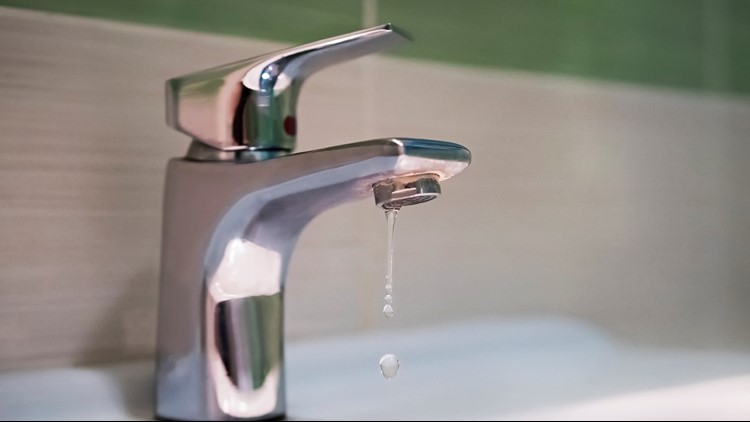TAMPA, Fla. -- After hearing about reports of lead in the water at schools across the country, the Hillsborough County schools started testing the water in its own facilities for the dangerous element, and they’re finding it.
The kids may have been out of class for the summer, but there’s been plenty of testing going on as district workers test dozens of schools. The tests are looking for lead in the drinking water.
“We felt it was very important to be proactive, even though there’s no requirement, to test our water,” said Hillsborough Schools spokesman Grayson Kamm.
The average age of a school in Hillsborough County is 50. Some are newer, and some were built a century ago.
So far, they’ve gotten to 53 of the 270 sites they intend to test. Out of the 1,781 samples taken up to this point there have been 26 that tested positive for traces of lead.
PREVIOUS: 26 samples across Hillsborough County schools had high lead concentration levels
“We immediately took action on those. We shut them down. We’ve replaced those. I know we can use them again until we have retested and made sure they’re clean,” Kamm said.
EPA standards allow 20 parts per billion of lead in drinking water, but the district is drawing the line at an even more strict 15.
“I’m glad they’re looking into it,” said Kara Rock. Rock, a mother of three, has two kids that go - or have gone to some of the schools where lead has been found.
While Rock said she was happy to hear they’re fixing it, she’s still worried.
“Absolutely. Their bodies are developing,” said Rock, “Their brains are so sensitive to environmental impact.”
“The population we really worry about are the young children,” said Dr. Fred Aleguas, Director at Florida’s Poison Control Center at TGH.
Dr. Aleguas said lead has no natural place in the human body. It can cause problems, “Like learning disabilities, cognitive issues later in life. Things that are tied to their growth and development,” he said.
Dr. Aleguas said the number of cases being found in Hillsborough schools is relatively low, and lead exposure is really more of a medical concern for children who are six years old and younger.
The vast majority of kids in the Hillsborough County school system are already older than that.
Parents like Rock said they would still like to see any lead issues removed.
District officials said they were working on it.
They plan to double the number of workers testing the water, but Kamm said it will still take several more months to finish the job.
“It’s important that we find out where they are even if we aren’t gonna like what we see, and immediately take action and fix that,” Kamm said.
We heard from a spokeswoman from Pinellas County schools, who said the district routinely tests for lead and none of its schools are approaching the EPA threshold.
Pasco County schools say they have three schools/complexes they test every three years because they operate water treatment plants that supply those schools with drinking water. They all currently test at acceptable levels, the district says.
The Hillsborough School district is testing its older schools first, since that was where lead issues would more likely be found.
Dr. Aleguas said the amount of lead being found in public schools is relatively small. So, if kids are testing positive for exposure, parents should look for other possible sources like lead-based paint in the home or some toys which might contain the dangerous element.
Here is the list provided by the Hillsborough County Schools District, showing campuses where lead has been detected:
Note: All issues below have been corrected and re-tested to ensure lead levels below 15 parts per billion except for any marked with a *,which indicates a fixture that is currently out of service and in the process of being corrected.
School, Location of fixture (Parts per billion)
1. Ballast Point Elementary, Kitchen Sink Room 039F (25.6)
2. Bloomingdale High, Drivers Ed Water Fountain (18.4)
3. Brandon High School, Kitchen Sink (40.9)
4. Brewster Tech, Room 208 Sink Left (17.8)
5. Brewster Tech, Room 201 Sink #2 (26.0)
6. Burney Elementary, Room 502A Kitchen Sink (34.1)
7. Burney Elementary, Backflow (33.0)
8. Carver Exceptional Center, Backflow (25.41)
9. Carver Exceptional Center, Kitchen Sink NE (29.9)
10. Carver Exceptional Center, Kitchen Pot Sink East (15.34)
11. Cleveland Elementary, Outside Water Fountain Left (19.5)*
12. DeSoto Elementary, Backflow (43.0)
13. Dowdell Middle, Music Room 102A (47.2)
14. Foster Elementary, Room 009 Drinking Fountain (34.6)
15. Gorrie Elementary, Backflow (48.3)
16. Graham Elementary, Kitchen Sink (23.4)
17. James Elementary, Backflow (37.5)
18. Kenly Elementary, Backflow (34.6)
19. Lincoln Elementary, Kitchen Pot Sink Right (21.8)*
20. Lutz Elementary, Room 003 Drinking Fountain (18.2)
21. McLane Middle, Building 500 Water Cooler Left (18.0)
22. Mitchell Elementary, Kitchen Hand Sink (224)
23. Smith Middle, Room 202 Prep Sink (217)
24. Smith Middle, Room 202 Hand Sink East (18.0)
25. Webb Middle, Room 1302J Hand Sink (51.7)
26. Wilson Middle, Clinic Sink (15.0)
►Make it easy to keep up-to-date with more stories like this. Download the 10 News app now.
Have a news tip? Email tips@wtsp.com, visit our Facebook page or Twitter feed.



